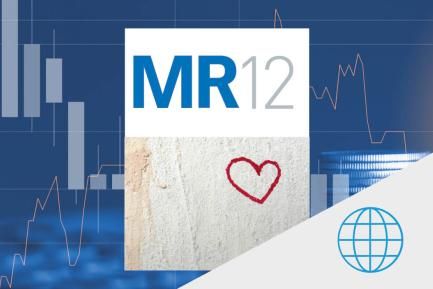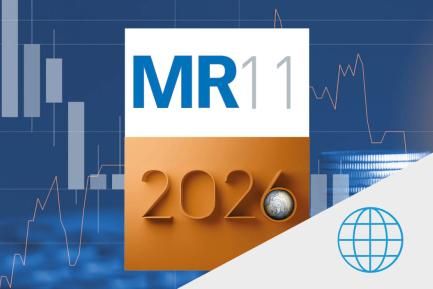
Thermal oscillation in the international economy
The world economy ended the first half of 2023 with three major dynamics: economic activity remained resilient, inflation fell steadily in all major economies, and financial conditions continued to tighten.
Economic activity and inflation, at different temperatures
The world economy ended the first half of 2023 with three major dynamics. Firstly, economic activity remained resilient in the face of the gloomy outlook anticipated at the end of 2022, supported by robust labour markets, the easing of the energy crisis, the normalisation of the bottlenecks, the recovery of confidence, China’s reopening and the buoyancy of services (which continues to more than offset the weakness in manufacturing). Secondly, inflation has been steadily declining in all major international economies, whether the US, China, Japan, Russia, the euro area, Brazil, or even Turkey. However, much of this decline reflects the correction in energy inflation, while underlying price pressures are fading more gradually. Thirdly, financial conditions continued to tighten, both due to new central bank rate hikes and as a result of the transmission of past rate increases. However, these dynamics have tempered somewhat in recent months. The latest indicators suggest a further cooling of economic activity, while the tightening of monetary policy, which ought to have been topping out around now, appears to still have some way to go.

Signs of cooling in the global economy
Among the three major giants of the global economy, a cooling of economic growth in the US and the euro area has been projected for several quarters now. This is a result of the restrictive monetary policies (to fight inflation), but also due to a statistical effect related to COVID-19 (whose impact on GDP still lingered during 2022). In contrast with these two advanced economies, China accelerated rapidly in the early stages of the year, spurred on by the abandonment of the country’s zero-COVID policy. However, various indicators suggest that this initial rebound has lost momentum in recent months. In June, the official composite PMI slowed to 52.3 points (–0.6 points versus May), while the manufacturing PMI was in contractionary territory and that of services registered a slowdown (from 54.5 points in May to 53.2 in June). This loss of steam will not compromise the authorities’ GDP target («around 5%», which seems conservative given the base effects), although they have begun to announce supportive measures, such as the PBoC’s first rate cuts in 10 months.

US economic activity remains strong amid the high interest rate environment
The sentiment indicators remained clearly within expansive territory in June (composite PMI at 53 points and consumer confidence at its highest level since January 2022). The labour market, meanwhile, continued to show significant strength and solid wage growth (+6.0% year-on-year in May, according to the Atlanta Fed’s indicator), although initial unemployment claims approached 260,000 per week on average during the month (a low figure, but the worst since autumn 2021). On the other hand, the real estate sector offered new encouraging signals with a 12.2% month-on-month rise in new home sales. Overall, the Q2 data indicate quarter-on-quarter GDP growth of 0.4%, which would be a slight slowdown compared to the 0.5% of Q1 (revised upwards after a preliminary estimate of 0.3%).

The US registers its lowest inflation levels since March 2021
Headline inflation continued to moderate in May, slowing to 4.0% year-on-year (CPI data) and down 0.9 pps versus the previous month, mainly thanks to a sharp decline in energy prices (–3.6% month-on-month). The other components of the basket of consumer prices followed a similar pattern to the previous month, thus confirming the disinflationary pressures relative to 2022. Nevertheless, they still remain high, and core inflation is showing some persistence (which excludes food and energy), having fallen 0.2 pps to 5.3% year-on-year. That said, some underlying components offered positive signals. In particular, inflation in services excluding housing, an indicator closely monitored by the Fed, fell to 2.9% (three-month average of the annualised and seasonally adjusted month-on-month inflation), well below the 6.5% registered in 2022.

Signs of slowdown and disparities in the euro area
On the one hand, industry continues to show signs of weakness, with industrial production barely registering +0.2% year-on-year growth in April and the manufacturing PMIs persistently in contractionary territory (44.7 points on average during Q2 and 43.6 in June). Thus, services (PMI at 54.6 points on average in the quarter, although falling to 52.4 in June) and the labour market (with an unemployment rate of 6.5% in May, an all-time low) remain the main support factors for economic activity. On the other hand, there is also a contrast between the resilience of the economies of the periphery and the weakness of the core. In particular, the statistical revisions of Q1 GDP confirmed that Germany is in a technical recession (–0.3% quarter-on-quarter in Q1 2023 and –0.5% in Q4 2022). Added to the volatility of Ireland (–4.6% quarter-on-quarter) and the contraction of the Netherlands (–0.7%), this weighed down on the euro area as a whole (–0.1% quarter-on-quarter after an initial estimate of +0.1%), despite the buoyancy of Spain (+0.5%) and Italy (+0.6%) and moderate growth in France (+0.2%). Nevertheless, during the course of Q2 the disparities have gradually converged to the downside, with a widespread deterioration in confidence indices, both among different countries and between sectors. As such, the composite PMI for the euro area as a whole went from around 54.1 points in April to a timid 50.3 in June, teetering on the border between economic expansion and contraction. These cautions were also reflected in a downward revision of growth expectations for Germany (the Bundesbank anticipates GDP growth of –0.3% in 2023), although the latest data suggest a slight recovery in Q2.

European inflation falls slowly
In June, headline inflation for the euro area as a whole fell to 5.5% year-on-year (–0.6 pps versus May), while core inflation rose 0.1 pps to 5.4% year-on-year following two months of moderation. Energy, food and industrial goods contributed to the disinflation, but prices in services once again accelerated. However, this year-on-year growth in services was distorted by a base effect in Germany (linked to significant transport discounts in 2022) and core inflation is expected to return to a path of gradual correction in the coming months. In fact, one measure of inflation unaffected by these base effects hints at inflation being much lower, albeit still high (specifically, inflation momentum – i.e. the change in the three-month average HICP over the average for the immediately preceding three months, duly annualised and seasonally adjusted – suggests headline inflation of 3.8% and a core rate of 4.3% in June).



